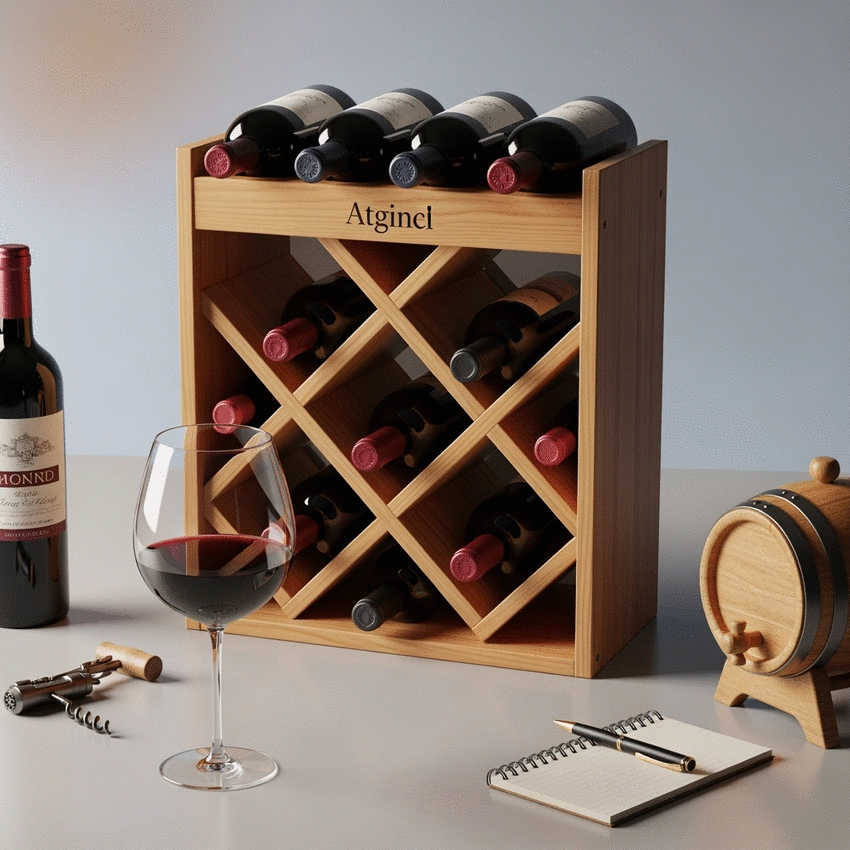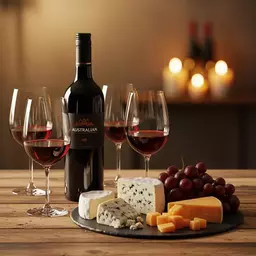Choosing the Right Australian Red Wine
By Clara Hastings / Nov 02
Have you ever found yourself contemplating the right way to store your cherished bottles of red wine? The answer isn't just about keeping them on a shelf; it's a science that can elevate your wine experience. Let's explore the fundamentals to ensure every sip brings joy!
Maintaining the right environment is crucial for preserving your red wine's flavor and aroma. Here are the key conditions for successful storage, ensuring your wine ages beautifully. For those new to the world of wine, understanding these basics is as important as learning about Australian red wine basics.
Keep red wine around 55°F for optimal aging and flavor development.
Maintain 60-80% humidity to prevent cork drying and oxidation.
Store wine in a dark place to protect from harmful UV rays.
Avoid vibrations and sudden movements to maintain aging process.
Have you ever wondered why properly storing your red wine is crucial? The truth is, it can make all the difference between a bottle that delights and one that disappoints. Proper red wine storage helps maintain the wine's quality, flavor, and aroma, leading to a more enjoyable experience every time you pop a cork!
As a passionate wine enthusiast, I’ve learned that many overlook the fundamentals of wine storage. Whether you're a casual drinker or a serious collector, understanding how to store your wines properly can enhance the aging process and preserve the unique characteristics of each varietal.
When it comes to red wine, the right storage conditions are essential. Here’s why:
Each of these factors contributes to your overall enjoyment. So, next time you bring a bottle home, remember that how you store it matters just as much as the wine itself! If you're looking to buy Australian red wines online, consider how you'll store them upon arrival.
Let’s clear the air about some myths surrounding red wine aging. Many people believe that any wine will improve simply by aging it in their cellar. This is far from the truth! Not all wines are created equal, and understanding which wines benefit from aging is key.
By debunking these misconceptions, you’ll be better equipped to make informed choices about your red wine collection. Remember, knowledge is power—especially in the world of wine!
Now that we understand the importance of proper storage, let’s dive into the optimal conditions for keeping your red wine at home! Finding the right environment will not only protect your investment but also enhance your wine tasting experiences.
To truly elevate your wine aging experience, consider investing in a wine fridge. These appliances maintain optimal temperature and humidity levels, ensuring that your collection is preserved in perfect condition. Not only will it enhance the flavors of your wines, but it will also provide peace of mind knowing that your bottles are stored correctly!
The optimal temperature for storing red wine is around 55°F (13°C). Consistent temperature is more important than achieving an exact 55°F, as fluctuations can harm the wine.
Maintaining humidity levels between 60-80% is crucial to prevent the cork from drying out. A dry cork can shrink, allowing air to seep into the bottle and oxidize the wine, spoiling its flavor.
Yes, red wine should always be stored in a dark place, away from direct sunlight and artificial light. UV rays can prematurely age and damage the wine, affecting its taste and aroma.
No, not all red wines improve with age. Many wines are made to be enjoyed young. Only certain varietals and higher-quality wines have the structure (tannins, acidity, fruit) to develop more complex flavors over time.
Signs of poorly stored wine include a dried-out or protruding cork, a vinegary or muted aroma, and an off-flavor that can be stale, overly bitter, or lacking in fruit character. The wine might also appear cloudy or brownish for a red wine.
As we wrap up our discussion on red wine storage, let’s highlight some essential practices that will ensure your wines age beautifully. Proper storage is not just about keeping your bottles safe; it’s about enhancing the overall experience of enjoying your favorite reds. Remember, a little care can go a long way in preserving the quality and flavors of your wine.
Here’s a quick recap of the key storage conditions we’ve explored:
By adhering to these guidelines, you can create the ideal environment for your wine collection, allowing those complex flavors to develop over time!
Aging red wine at home can be a rewarding journey, especially when you see the fruits of your labor in the glass. To ensure your success, here are some final tips to keep in mind:
With these tips, you’ll be well on your way to mastering the art of aging red wine. Remember, the journey of wine is as delightful as the destination!
If you’re serious about wine aging, it might be time to explore dedicated storage solutions. Whether it’s investing in a wine fridge or building a custom cellar, there are options suited for every enthusiast. Here are some ideas to consider:
Each option has its benefits, so think about what works best for your space and your collection! Learning to taste red wine like an expert also involves appreciating how storage affects its profile.
Connecting with fellow wine lovers can greatly enhance your knowledge and appreciation of red wines. I always encourage enthusiasts to engage with the community—whether it’s online or at local tastings. Here are a few ways to get involved:
The wine community is vibrant and full of shared experiences, which can deepen your understanding and enjoyment!
Lastly, continuous education is key in the ever-evolving world of wine! Here are some resources that I recommend for staying informed:
By investing your time in learning, you’ll not only enhance your wine experience but also become a more knowledgeable enthusiast. Cheers to your wine journey!
Here is a quick recap of the important points discussed in the article:



 Choosing the Right Australian Red Wine
Choosing the perfect Australian red wine can significantly enhance your dining experience. Are you r
Choosing the Right Australian Red Wine
Choosing the perfect Australian red wine can significantly enhance your dining experience. Are you r
 Australia's Red Wine Regions Explored
The journey through Australia's red wine landscape is as rich and varied as the wines themselves. Ha
Australia's Red Wine Regions Explored
The journey through Australia's red wine landscape is as rich and varied as the wines themselves. Ha
 Sustainable Red Wine and the Earth
What if your wine choices could help save the planet? Sustainable red wine production not only ensur
Sustainable Red Wine and the Earth
What if your wine choices could help save the planet? Sustainable red wine production not only ensur